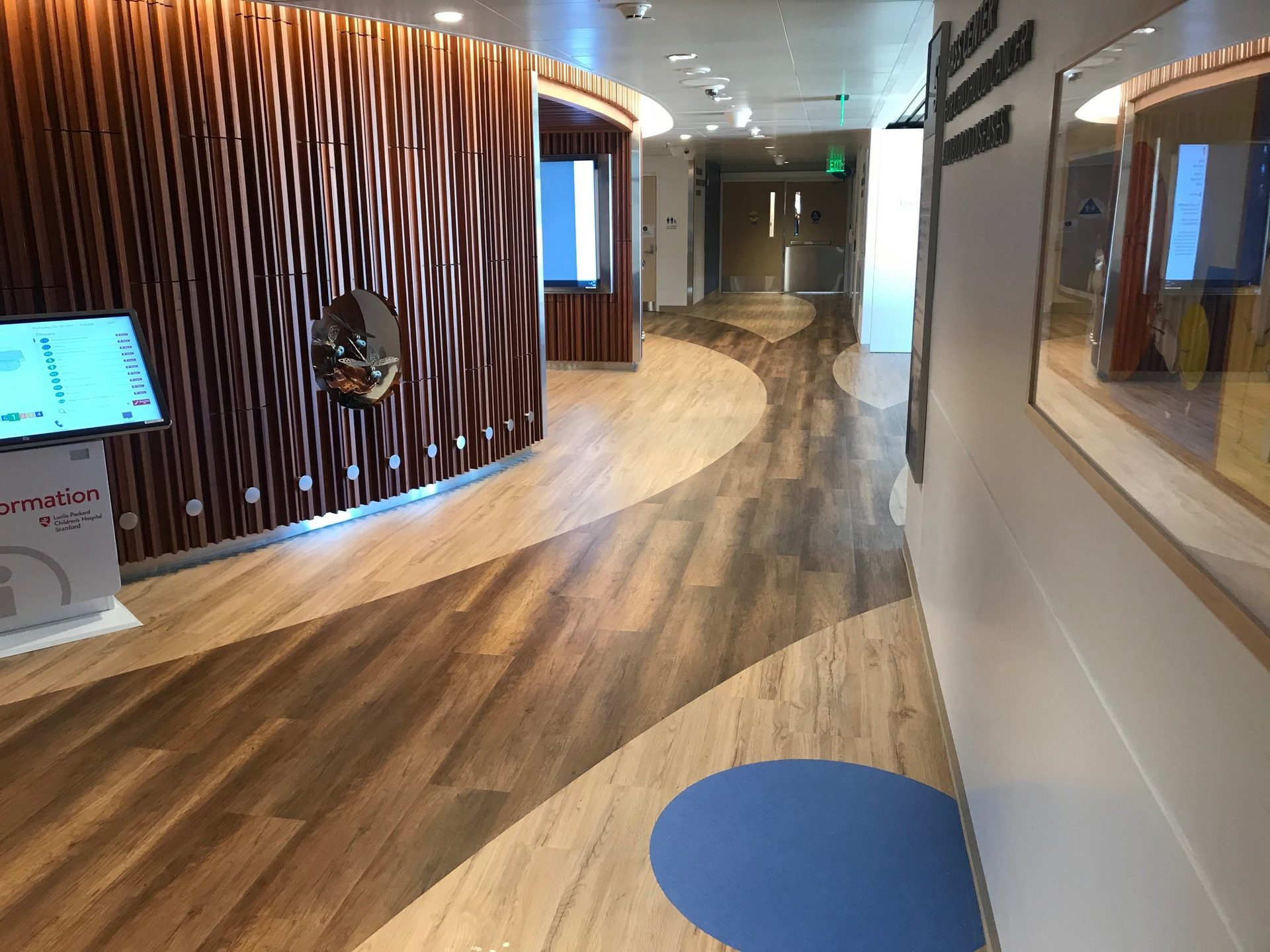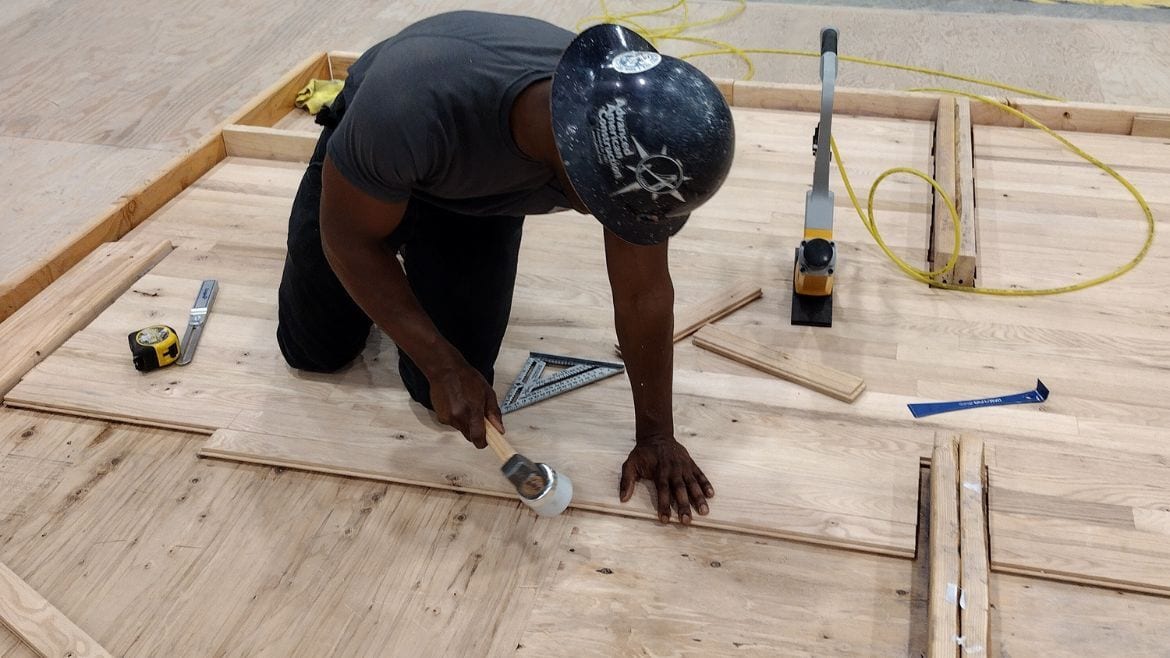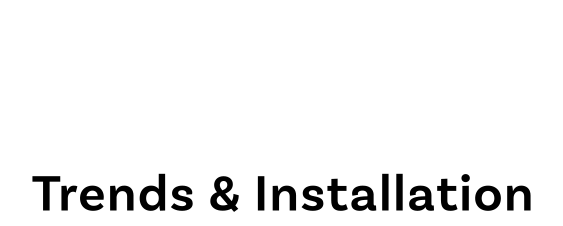Sponsored by Windmoeller Inc.
By Amanda C Voss, MPP
Continuing Education
Innovations in Resilient Flooring

Photo: Courtesy of Windmoeller Inc.
Credits: 1 AIA LU/HSW; 1 GBCI CE Hour; 1 IDCEC CEU/HSE; 0.1 ICC CEU

Learning Objectives
After reading this article, you should be able to:
- Define “PVC-free” flooring materials and discuss their health and safety benefits for building occupants.
- Describe the significance of industry testing standards for flooring performance and gain familiarity with applicable ASTM (American Society for Testing and Materials) product specifications.
- Specify PVC-free resilient flooring materials confidently, matching their attributes to commercial environments and projects that are pursuing green certification.
- Utilize third-party sustainability tools to evaluate PVC-free resilient flooring materials.
To receive AIA credit, you are required to complete the entire course and pass the quiz. Visit ce.floortrendsmag.com for the complete course and to take the quiz for free.
Sunnyvale Elementary, built during a boom of community growth in the 1980s, was overdue for a makeover. The outdated vinyl composite tile (VCT) flooring in the corridors and first-floor classrooms was not only showing its age with scratches, dents, and stains, but the presence of the material itself raised concerns due to potential health risks associated with chemicals of concern in the construction of PVC-based flooring. The school's facilities management team, led by Sarah Rodriguez, along with the school administration and board representatives, embarked on a mission to find a new flooring solution. Additionally, the team’s vision had another layer–to achieve LEED v4 certification. As this green building rating system recognizes and rewards environmentally responsible practices, any flooring product selected would need to uphold those values.
Vinyl flooring commands a significant part of the resilient flooring market, thanks to its versatility, affordability, and performance characteristics. Beyond the fictional case study of Sunnyvale Elementary, vinyl flooring can be and is used in various types of buildings.
However, the PVC (polyvinyl chloride) used to make vinyl flooring products faces rising concerns and government scrutiny about health impacts and environmental hazards involved in its production, transportation, and disposal. PVC is a synthetic polymer that studies have shown when burned releases a group of harmful chemicals called dioxins that are persistent in the environment and can lead to serious health issues. The inclusion of PVC in projects is opposed by various groups and some design firms like Perkins + Will.1 Prominent end users like Kaiser Permanente2 and Harvard University3 will not specify it.

Advances in resilient PVC-free floors have facilitated exceptional design flexibility. However, it is crucial that the designer and specifier have access to transparent material information to make the best product determination where sustainability is a concern. Photo: Courtesy of Matter Surfaces and provided by Windmoeller Inc.
On December 14, 2023, the U.S. Environmental Protection Agency (EPA) announced that it is beginning the process of prioritizing five additional toxic chemicals for risk evaluation under the Toxic Substances Control Act (TSCA). Among those substances is Vinyl Chloride (CASRN 75-01-4).
The inclusion of vinyl chloride is notable for the flooring industry because of its wide use in the market. While the EPA’s announcement does not mean an abrupt ban on vinyl chloride or its derivative products is on the immediate horizon, it sparks critical questions about the future of a significant segment of the flooring industry.
The EPA decision aligns with the increased market trend specifying new, resilient flooring materials that are PVC-free. To navigate this wave of change toward both healthier and more sustainable flooring, it is vitally important that design professionals and specifiers understand what is meant by the terms “resilient flooring” and “PVC-free” flooring materials.
AUGUST 2024 FLOORTRENDSMAG.COM


